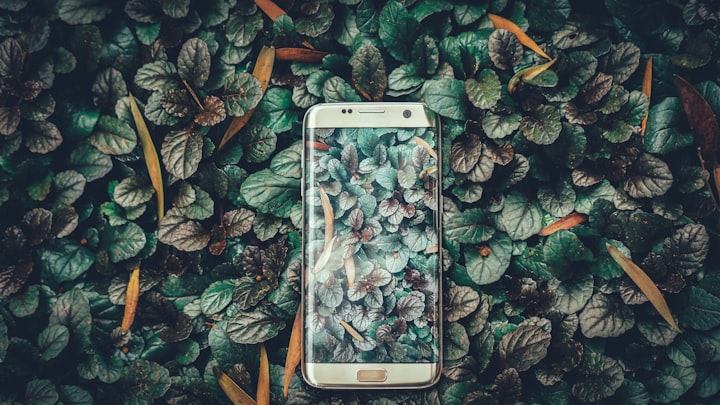Nature-Inspired Solutions: How Biomimicry is Helping Us Solve Some of Humanity's Biggest Challenges
Unleashing the Power of Sustainability and Innovation

Have you ever thought about how we can solve some of humanity's biggest challenges by looking to nature for inspiration? Well, that's exactly what biomimicry is all about!
Biomimicry is the practice of studying nature and then using what we learn to design and create new technologies, materials, and processes. It's based on the idea that nature has had millions of years to evolve and come up with solutions to all sorts of problems, and that we can learn from these solutions to improve our own designs.
One of the biggest benefits of biomimicry is that it can lead to more sustainable and environmentally friendly solutions. Think about it: natural systems have evolved to be highly efficient and to have minimal impact on their surroundings. By studying these systems and incorporating their principles into our designs, we can reduce the environmental footprint of our technologies and processes.
For example, have you ever seen a lotus plant? These plants are known for their ability to self-clean. Their leaves have a special microstructure that allows them to repel dirt and water, so they stay clean with just a quick shake. Engineers have used this principle to design self-cleaning surfaces for all sorts of things, like buildings, vehicles, and even solar panels.
Another example of biomimicry is the way that some birds are able to fly long distances with minimal energy expenditure. Engineers have studied the anatomy and aerodynamics of these birds to design more efficient aircraft, which can use less fuel and emit fewer greenhouse gases.
But biomimicry isn't just about sustainability - it can also lead to innovative and effective solutions for a wide range of problems. For example, the Velcro fastening system was inspired by the way that burrs attach to animal fur. And have you ever heard of gecko tape? Engineers studied the way that geckos are able to stick to vertical surfaces, and used that knowledge to develop an adhesive material that can hold large amounts of weight.
Now, I know what you might be thinking: studying natural systems and using what we learn to design new technologies sounds like a lot of work. And you're right - it can be complex and time-consuming. But the potential rewards of biomimicry are huge! It can lead to solutions that are more efficient, effective, and sustainable than traditional approaches.
One area where biomimicry has the potential to make a big impact is energy. Many natural systems, like photosynthesis in plants, are able to harness energy from their surroundings in super efficient ways. By studying these systems, we may be able to develop new technologies that can generate energy more sustainably and with fewer negative impacts on the environment.
Biomimicry can also be applied to the design of materials and products. Scientists have studied the way that certain insects are able to create strong and lightweight exoskeletons, and used that knowledge to develop new materials that are both strong and lightweight. These materials can be used in all sorts of applications, like construction, transportation, and even sports equipment.
One of the most exciting aspects of biomimicry is the potential for cross-disciplinary collaboration. By bringing together experts from various fields, such as biology, engineering, and design, we can tap into a wide range of knowledge and perspectives to come up with new solutions to problems.
For example, in the field of healthcare, biomimicry has the potential to revolutionize the way we diagnose and treat diseases. By studying the ways that animals and plants defend themselves against illness and injury, we may be able to develop new drugs and medical treatments that are more effective and have fewer side effects.
In the field of transportation, biomimicry can help us design more efficient and sustainable modes of transportation. For example, engineers have studied the way that certain fish are able to swim through water with minimal energy expenditure, leading to the development of new underwater vehicles that can operate more efficiently.
Biomimicry can also have applications in the field of architecture and urban design. By studying the ways that animals and plants create and use space, we may be able to design more efficient and sustainable buildings and cities. For example, scientists have studied the way that termites are able to regulate the temperature and humidity in their nests, leading to the development of new building materials and techniques that can help us create more energy-efficient structures.
In addition to these practical applications, biomimicry can also help us better understand and appreciate the natural world. By studying the ways that animals and plants function, we can gain a deeper understanding of the complexities and interconnectedness of natural systems. This can help us develop a greater sense of respect and reverence for nature, and encourage us to take better care of our planet.
Biomimicry is a design approach that has the potential to revolutionize the way we think about and solve problems. By looking to nature for inspiration, we can develop more sustainable and innovative solutions for a wide range of challenges. Whether it's in healthcare, transportation, architecture, or any other field, biomimicry has the potential to make a big impact on the way we live and work. So, it is a very important area of research and development for the future.
About the Creator
Olivia L. Dobbs
Science Enthusiast, Naturalist, Dreamer, Nerd.
I crosspost my Medium articles here :)
You can find my main account on Medium: https://medium.com/@oliviadobbs13
Check out my science! -> bit.ly/DobbsEtAl






Comments
There are no comments for this story
Be the first to respond and start the conversation.